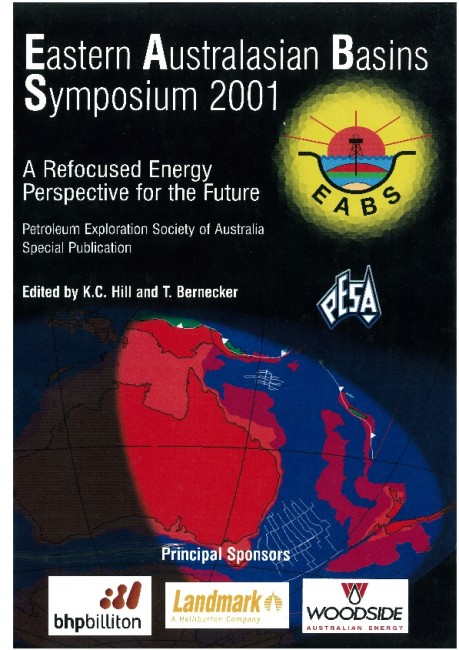Publication Name: Eastern Australian Basins Symposium 2001
Authors: L. Kramer, K.R. Arouri and D.M. McKirdy
Date Published: November 2001
Number of Pages: 35
Reference Type: Magazine Article
Abstract:
This study documents the generation and expulsion of liquid hydrocarbons from coal seams containing Type II/III kerogen in the Patchawarra Formation at Gidgealpa-52, southwest Cooper Basin. Two different drainage scenarios have been compared, one involving a thin coal seam (0.61 m) overlain by sandstone, and the other a thicker coal seam (2.8 m) overlain by siltstone. The migration of hydrocarbons out of the coal is documented by systematic changes in the saturated and aromatic hydrocarbon fractions of its residual bitumen with increasingproximity to the overlying or inter-bedded permeable siliciclastic units.
Although free C l2+ hydrocarbons are highly depleted in these coals (saturates + aromatics <15% of bitumen), consistent with their near-peak-generation level of thermal maturity (R0 = 0.95%), remnant gradients in the concentration and composition of the residual hydrocarbons are still evident in both seams. The effects of primary migration are best observed in the thin seam, which displays a consistent drainage gradient from its base (underlain by impermeable shale) towards the upper coal/sandstone contact. Saturates are more readily
expelled than aromatics, as are the methylnaphthalenes relative to the heavier alkylnaphthalenes and methylphenanthrenes. The calculated expulsion efficiencies of C2s-C3o n-alkanes are moderately high (50 -
60%), as previously reported for Type Ill kerogen source rocks in which pressure-driven movement of a discrete gaseous hydrocarbon fluid is the major migration mechanism. The presence of the overlying sandstone facilitates the drainage of hydrocarbons from the thin coal seam. However, the drainage gradients in the upper part of this seam, as well as adjacent to a thin sandstone interbed within the thicker seam, are distorted by post-expulsion replenishment of shorter-chain n-alkanes and other low-molecular-weight compounds. Minimum liquid-hydrocarbon expulsion efficiencies of 40 - 45% are indicated. Such estimates may be used to better constrain the ultimate Permian oil reserves of the Cooper Basin.


